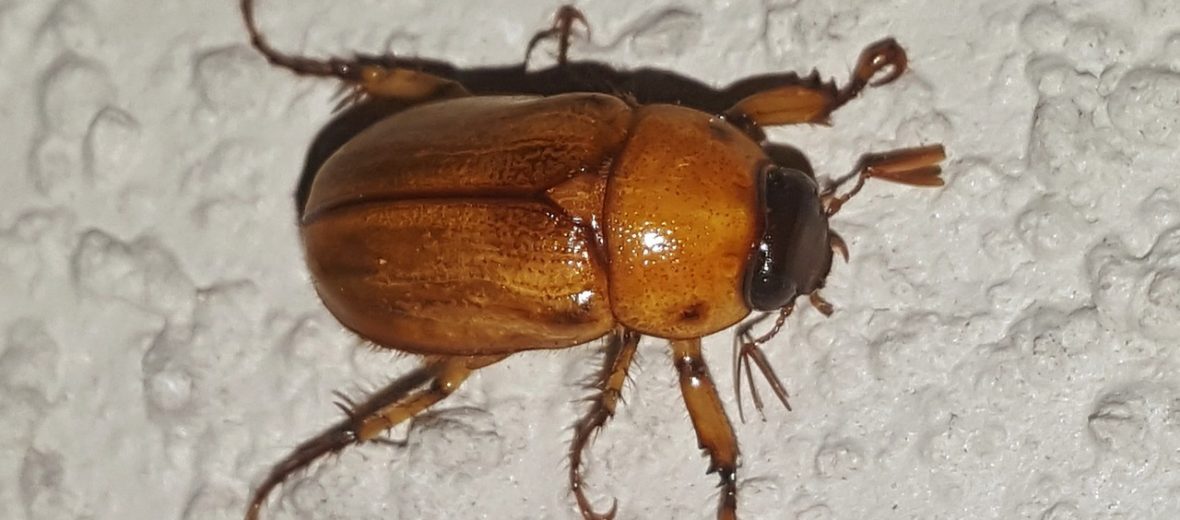
Ah yes, the June bug. They emerge at the end of spring and the beginning of summer and spend all night bumping into walls, lights, and you! June bugs spend most of their lives as grubs in the soil. They only emerge after pupating into adults in order to find a mate, breed, lay their eggs, then die. These insects are not only a nuisance to someone working in their open garage at night, but they also do significant damage to crops. This article is on special request from Jon.
First the Stats…
Scientific name: Cotinis nitida
Length: Up to 1 inch
Lifespan: Up to 3 years
Now on to the Facts!
1.) June bugs are also called June beetles and May beetles.
2.) They feast on roots and tubers as grubs and leaves as adults.
3.) The waved light fly female lays an egg under the beetle’s elytra (wing casing), where it hatches and feeds on the beetle, ultimately killing the beetle.
4.) They are also predated by blue jays, crows, skunks, moles, and raccoons.
5.) These notoriously clumsy fliers only use 2 of their 4 wings to gain lift. They have poor vision and really bad trajectory. This is why they bump into everything.
But wait, there’s more on the June bug!
6.) Beetles have been around for approximately 230 million years!
7.) June bugs are nocturnal (active at night).
Did you know…?
Exposure to light for long periods of time can kill a June bug. This is because they are nuts for light. They fly and buzz into lights for hours until they drop dead from exhaustion.
8.) Females lay up to 75 eggs in the soil within a 2 week period. These eggs hatch and go through their life stages (larvae, pupa, and eventually adult) in 2 – 3 years.
Now a Short June Bug Video!
Also, check out the Critter Science YouTube channel. Videos added frequently!
Want to suggest a critter for me to write about? Let me know here.



